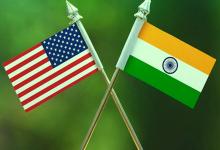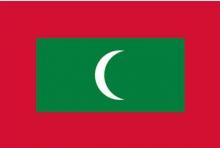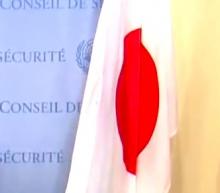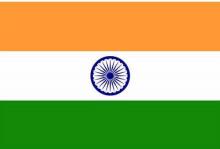-

“Today we are all Hibakusha,” UN Secretary-General Kofi Annan said, using the Japanese term for victims of the Hiroshima and Nagasaki nuclear bombings on the occasion of the Sixtieth anniversary of the events. Annan urged international leaders to take action against the spread of nuclear weapons.
-

Most Indians find the Americans overbearing and unjust. They find the Americans fiercely self-obsessed and highly individualistic. Most importantly they find the American policy towards India a consequence of or an offshoot of American policy to “something else” and not a policy that is based on an independent recognition of India as moral power. They think that America is far too in love with Pakistan and unjustly gives them a long rope. Naturally, against this backdrop of this, it is becoming difficult for many to digest the latest Indo-American deal on nuclear power.
-

On June 2, 2005, the Maldivian parliament voted to allow multi-party democracy for the first time in the tiny atoll nation ruled by President Maumoon Abdul Gayoom since 1978. The parliament unanimously approved a resolution to allow political parties to seek recognition and contest elections, ending the no-party system in the nation. The motion was moved based on a request from President Gayoom to review its earlier decision not to allow political parties in the country.
-

The arrest of three Babbar Khalsa militants on July 17 near Madhopur Chowk in Fatehgarh Sahab district of Punjab, along with assault rifles and explosives, have not only underscored the outfit’s weakening stature in Punjab but also show a trend of desperation within the residual Babbar Khalsa International (BKI) elements who either are attempting to come over ground or to flee the country.
-

The shift in the global energy matrix in favour of hydrocarbons has posed many serious issues, including environmental concerns. It is precisely because of these adverse consequences that Natural gas has been accepted as the preferred fuel for the present century. Unlike other fossil fuels, it is one of the cleanest, safest, and most useful energy sources.
-

As per the UN High-Level Panel Report on Threats, Challenges, and Changes [titled ‘A More Secure World: Our Shared Responsibility’], two options were recommended for broadening the current representation of the UN Security Council. This was done primarily to provide geographical balance and change power equations since the end of World War II and the creation of the United Nations.
-

Tryst with Modern Jihadi Terrorism: By the mid-nineties, Libya was faced with a peculiar situation. The Gaddafi regime, which had successfully masterminded several acts of terrorism outside its soil, was now the target of radical elements within its territory. The veterans of the Afghan war included several thousand Libyans, some of whom returned to Libya to form the Libyan Islamic Fighting group (LIFG), with the aim to overthrow Gaddafi and establish an Islamic state based on Shariah laws.
-

The North African State of Libya has been in the news recently for reasons other than the controversial antics of its President, Colonel Muammar Gaddafi. The capture of the Al Qaeda operative, Abu Firaj al Libby, a Libyan citizen, in early May this year in Mardan (Pakistan) calls for a deeper study of the Al Qaeda-Libya connection. Almost exactly a month later, on June 3, 2005, Libya was in the news again when it was reported that an Al Qaeda cell in Libya had threatened an attack on the northeast coastal city of Darna if one of its cell leaders was not released from prison.
-

Of late, the Sambalpur district of Orissa has become a hotbed for Naxal activities. After a period of silence, the rebels have again managed to strike terror, and this time, they have attacked, killing civilians. Late last month, on May 27, the Maoists went on a rampage and killed three villagers and injured several others in the Burda village under Jujumura police station. Before this, Maoist activities were only confined to abductions followed by ransom. The incident came as a shock as the Maoists generally targeted the police, forest officials, contractors and other businessmen.
-

Trends in defence expenditure denote certain clues to assess, especially the military component of a state’s comprehensive national power. Components of national power, in turn, are intricately linked to a state’s grand strategy - the latter connotes the desire of a state to achieve its rightful place in the global community. In brief, trends in defence expenditure tend to objectively assess aspects of a state’s military capability, although a lacuna remains as even the very concept of military capability is often value-laden.
Paxton ported to drupal by DropThemes.in